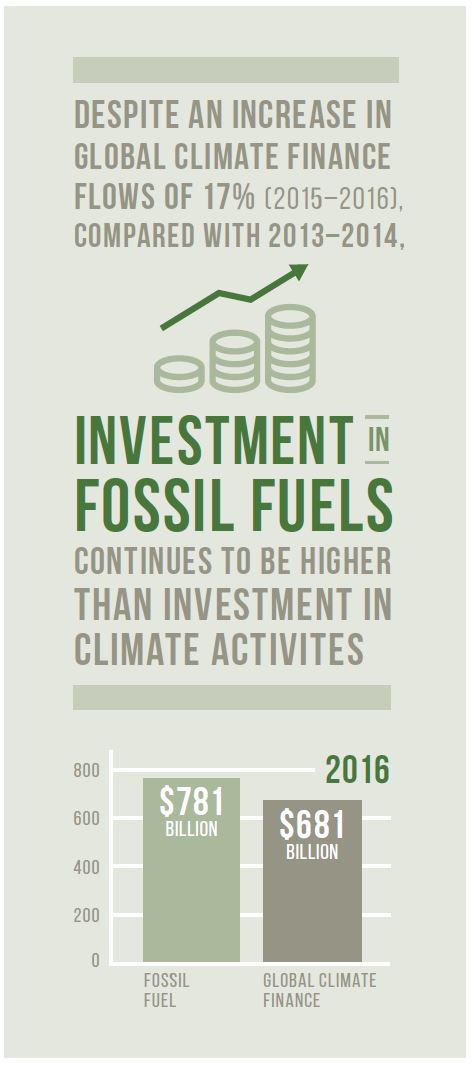Globally, climate-related financial flows have increased, with most of the funds dedicated to curbing greenhouse gas emissions. A relatively small share is helping countries adapt to the effects of climate change. The third biennial assessment by the United Nations Climate Change Secretariat Standing Committee on Finance shows a 17 per cent increase in global climate finance from 2013-2014 to 2015-2016.
Upper-limit estimates rose from $584 billion in 2014 to $680 billion in 2015 and to $681 billion in 2016. The spurt in growth from 2014 to 2015 was driven largely by high levels of new private investment in renewable energy, which is the largest segment of the global total.
While those financial flows are considerable, they are relatively small in relation to the scale of the problem and wider trends in global investment. Moreover, investments in climate activities are still surpassed by those related to fossil fuels ($781 billion in 2016). Climate-related financing for developing countries increased by 24 per cent in 2015 to $33 billion, and by 14 per cent in 2016 to $38 billion.


